
Architecture
- Traditional architecture in Sri Lanka has displayed a rich variety of architectural forms and styles. It is closely based on religious beliefs as most other Sri Lankan arts. Undoubtedly, Buddhism was influenced most and Hinduism also played an important role in Sri Lankan traditional architecture.
Since Sri Lanka has been occupied by three generations of colonization, beginning with the Portuguese, then by the Dutch and finally the British, the architecture in Sri Lanka has been influenced by those three cultures through the course of time.
Modern Sri Lankan architecture was flourished by Geoffrey Manning Bawa, popularly known as Geoffrey Bawa (23 July 1919 – 27 May 2003). He was one of the most influential Asian architects of his generation. He was the pioneer in introducing architecture tradition called “Tropical Modernism”.
Buddhist Architecture
Stupa
One of the most dominant characters of Buddhist architecture is the Stupa (Dagoba), which can be seen throughout the Island. Jetawanaramaya is the largest Stupa constructed in the world.
Vatadage
“Vatadage” has considered the most perfect and exquisite architectural creation in ancient Sri Lanka. it is a circular relic house enclosing a small Stupa with a wooden roof and Buddha images in the four cardinal directions. Medirigiriya, Tiriyaya, and Polonnaruwa vatadage still have their circles of slender, graceful pillars.
Bodhighara
The ritual activities developed centered on the Bodhi tree resulted in an architectural feature called Bodhighara or Bodhi-tree house. This was a roofed structure over the circumambulatory path that runs around the sacred tree.
Uposathaghara
"Uposathaghara" or chapter house was a monument used for the Uposatha ceremony and at times as a monastic dwelling. The best example is the Lovamahapaya at Anuradhapura; a storeyed structure with 1600 pillars, first constructed in the 2nd century BC.
Image House
A brick shrine with a vaulted roof, as seen in Polonnaruwa, at Thuparamaya, Lankatilaka, and Tivanka Pilimage, is unique to Sri Lanka. Thuparama Image House is the best place to examine how the vaulted roof was created by ancient Sri Lankan architects.
Cave Temples
The drip ledged cave shelters were used as a monastery in ancient Sri Lanka. The top edge of the rock cave was carved to stop the rainwater running into the cave. The roof and walls were plastered white and decorated with paintings.
Meditation Temple (Padhanagara)
The hermit monks who engaged in deep meditation called the “Aranyavasikas” or the “forest dwellers” were a characteristic feature of Buddhism in Sri Lanka. A few locations such as Ritigala, Arankele, and western monasteries in Anuradhapura have been identified as the places called "padhanagara" or meditation temples, inhabited by these monks, which are unique to Sri Lanka.
Temple of the Tooth Relic
From the 5th Century AD, there were buildings designed for the Sacred Tooth Relic. These were placed in the vicinity of the royal palace within the citadel. Temples called Atadage and Hetadage at Polonnaruwa are examples.
Hindu Architecture
A Hindu temple basically consists of a prayer hall and a shrine room. The central edifice is called a sikhara, usually in a domed or pyramid shape, which is elaborately decorated with sculptures and brightly coloured.
European Architecture
Traditional architecture in Sri Lanka was highly influenced by European architecture during their occupations. The Portuguese tiled roof building with its verandah are hardly found but the Dutch and the British architectural building can be found around the country.
Geoffrey Bawa - Architectural Legend in modern Sri Lanka
Geoffrey Bawa, an architectural Legend in modern Sri Lanka is a national treasure. He was the person who links the ancient architecture of the country with that of the modern world and left behind a legacy that will last for decades. Bawa’s buildings are aesthetically stunning, and the philosophy behind his work which radiance of a broad culture shines forth from the work of this genius.
- Traditional architecture in Sri Lanka has displayed a rich variety of architectural forms and styles. It is closely based on religious beliefs as most other Sri Lankan arts. Undoubtedly, Buddhism was influenced most and Hinduism also played an important role in Sri Lankan traditional architecture.
Since Sri Lanka has been occupied by three generations of colonization, beginning with the Portuguese, then by the Dutch and finally the British, the architecture in Sri Lanka has been influenced by those three cultures through the course of time.
Modern Sri Lankan architecture was flourished by Geoffrey Manning Bawa, popularly known as Geoffrey Bawa (23 July 1919 – 27 May 2003). He was one of the most influential Asian architects of his generation. He was the pioneer in introducing architecture tradition called “Tropical Modernism”.
Buddhist Architecture
Stupa
One of the most dominant characters of Buddhist architecture is the Stupa (Dagoba), which can be seen throughout the Island. Jetawanaramaya is the largest Stupa constructed in the world.
Vatadage
“Vatadage” has considered the most perfect and exquisite architectural creation in ancient Sri Lanka. it is a circular relic house enclosing a small Stupa with a wooden roof and Buddha images in the four cardinal directions. Medirigiriya, Tiriyaya, and Polonnaruwa vatadage still have their circles of slender, graceful pillars.
Bodhighara
The ritual activities developed centered on the Bodhi tree resulted in an architectural feature called Bodhighara or Bodhi-tree house. This was a roofed structure over the circumambulatory path that runs around the sacred tree.
Uposathaghara
"Uposathaghara" or chapter house was a monument used for the Uposatha ceremony and at times as a monastic dwelling. The best example is the Lovamahapaya at Anuradhapura; a storeyed structure with 1600 pillars, first constructed in the 2nd century BC.
Image House
A brick shrine with a vaulted roof, as seen in Polonnaruwa, at Thuparamaya, Lankatilaka, and Tivanka Pilimage, is unique to Sri Lanka. Thuparama Image House is the best place to examine how the vaulted roof was created by ancient Sri Lankan architects.
Cave Temples
The drip ledged cave shelters were used as a monastery in ancient Sri Lanka. The top edge of the rock cave was carved to stop the rainwater running into the cave. The roof and walls were plastered white and decorated with paintings.
Meditation Temple (Padhanagara)
The hermit monks who engaged in deep meditation called the “Aranyavasikas” or the “forest dwellers” were a characteristic feature of Buddhism in Sri Lanka. A few locations such as Ritigala, Arankele, and western monasteries in Anuradhapura have been identified as the places called "padhanagara" or meditation temples, inhabited by these monks, which are unique to Sri Lanka.
Temple of the Tooth Relic
From the 5th Century AD, there were buildings designed for the Sacred Tooth Relic. These were placed in the vicinity of the royal palace within the citadel. Temples called Atadage and Hetadage at Polonnaruwa are examples.
Hindu Architecture
A Hindu temple basically consists of a prayer hall and a shrine room. The central edifice is called a sikhara, usually in a domed or pyramid shape, which is elaborately decorated with sculptures and brightly coloured.
European Architecture
Traditional architecture in Sri Lanka was highly influenced by European architecture during their occupations. The Portuguese tiled roof building with its verandah are hardly found but the Dutch and the British architectural building can be found around the country.
Geoffrey Bawa - Architectural Legend in modern Sri Lanka
Geoffrey Bawa, an architectural Legend in modern Sri Lanka is a national treasure. He was the person who links the ancient architecture of the country with that of the modern world and left behind a legacy that will last for decades. Bawa’s buildings are aesthetically stunning, and the philosophy behind his work which radiance of a broad culture shines forth from the work of this genius.
Fantastic Activities in Architecture
British Gothic architecture, Old Welekade market, Badulla
BADULLA
- British gothic architectural style is displayed...
Read More
Adisham Bungalow, British Gothic Architecture
ELLA
- The Adisham bungalow, a country house built in...
Read More
Gadaladeniya, Lankathilaka, Embekke temples
KANDY
- Gadaladeniya, Lankathilaka, and Embekke tri...
Read More

 +39 - 39 - 307 6 3730
+39 - 39 - 307 6 3730 +94 - 74 - 000 9208
+94 - 74 - 000 9208

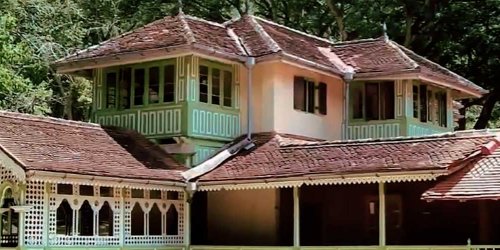


























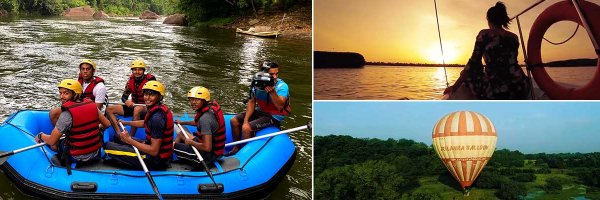





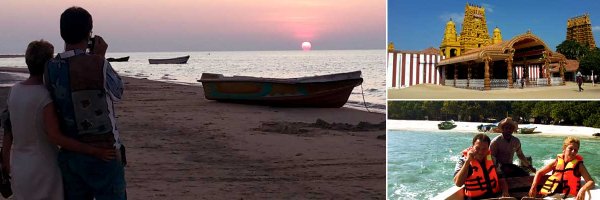

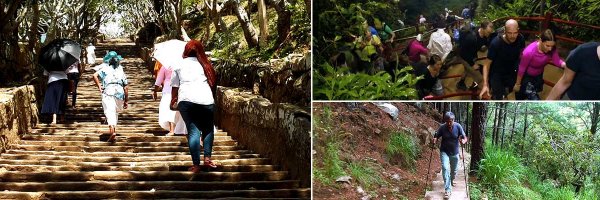

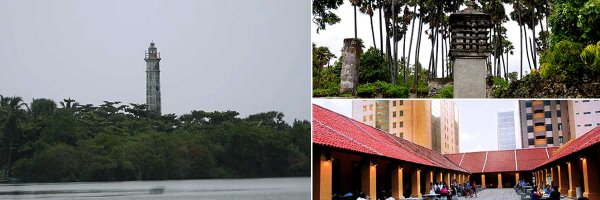



Share this page